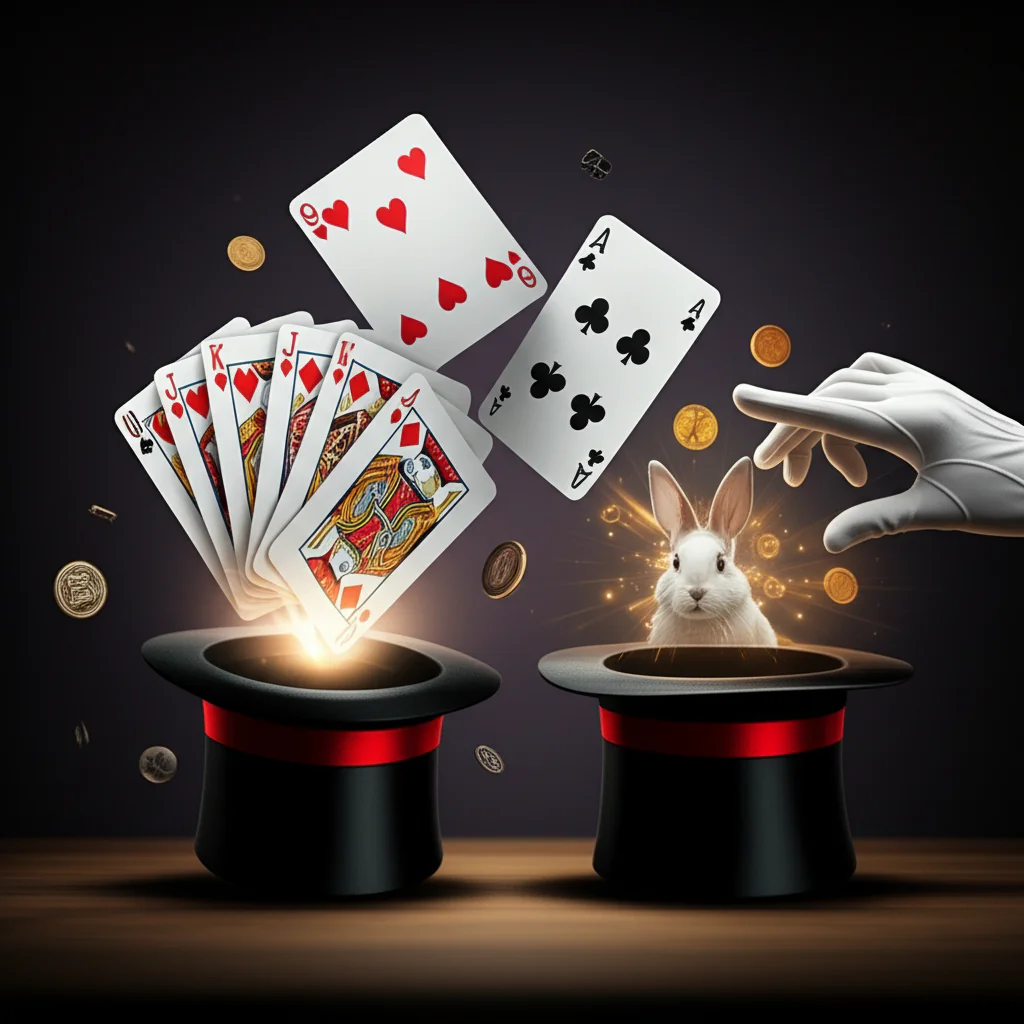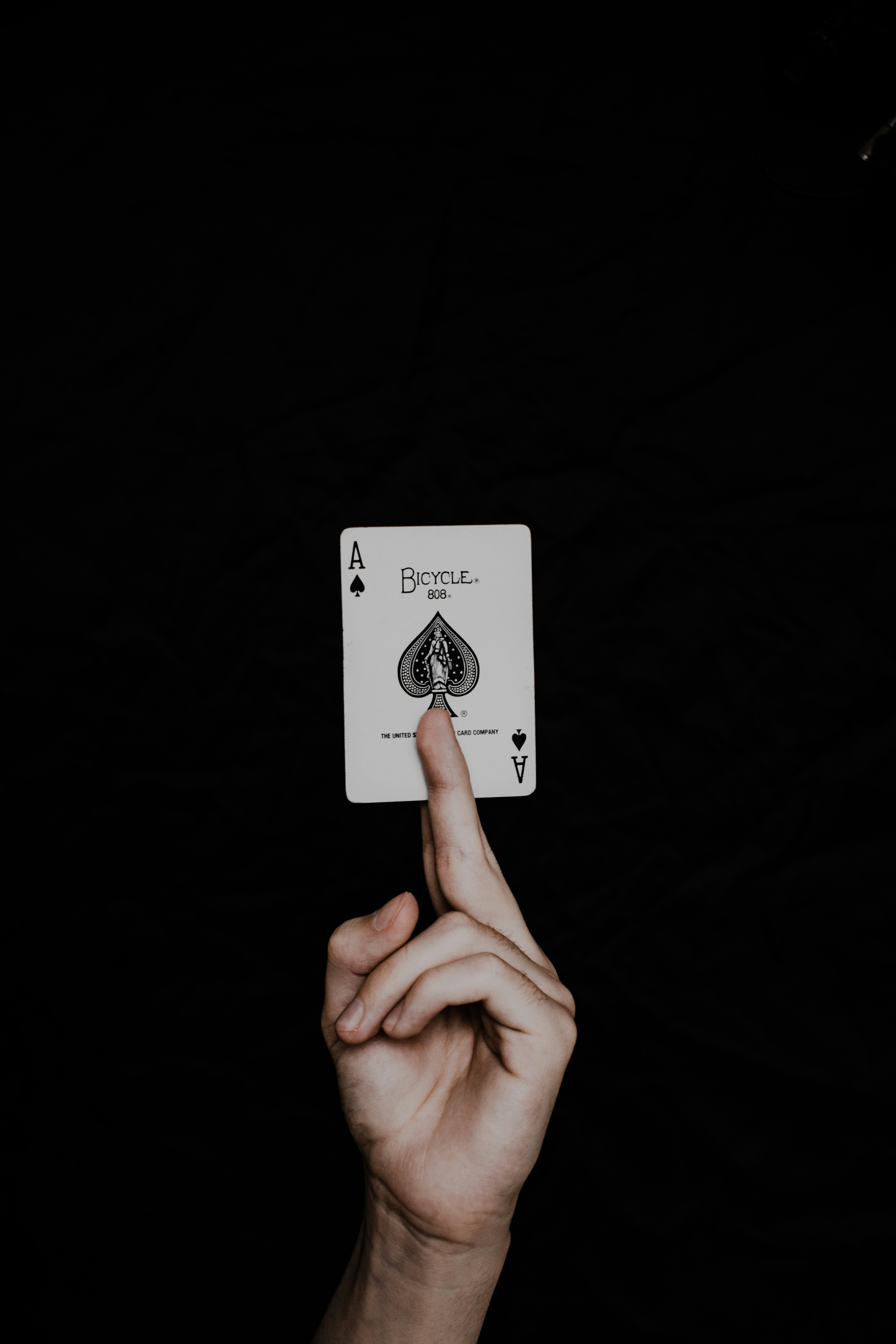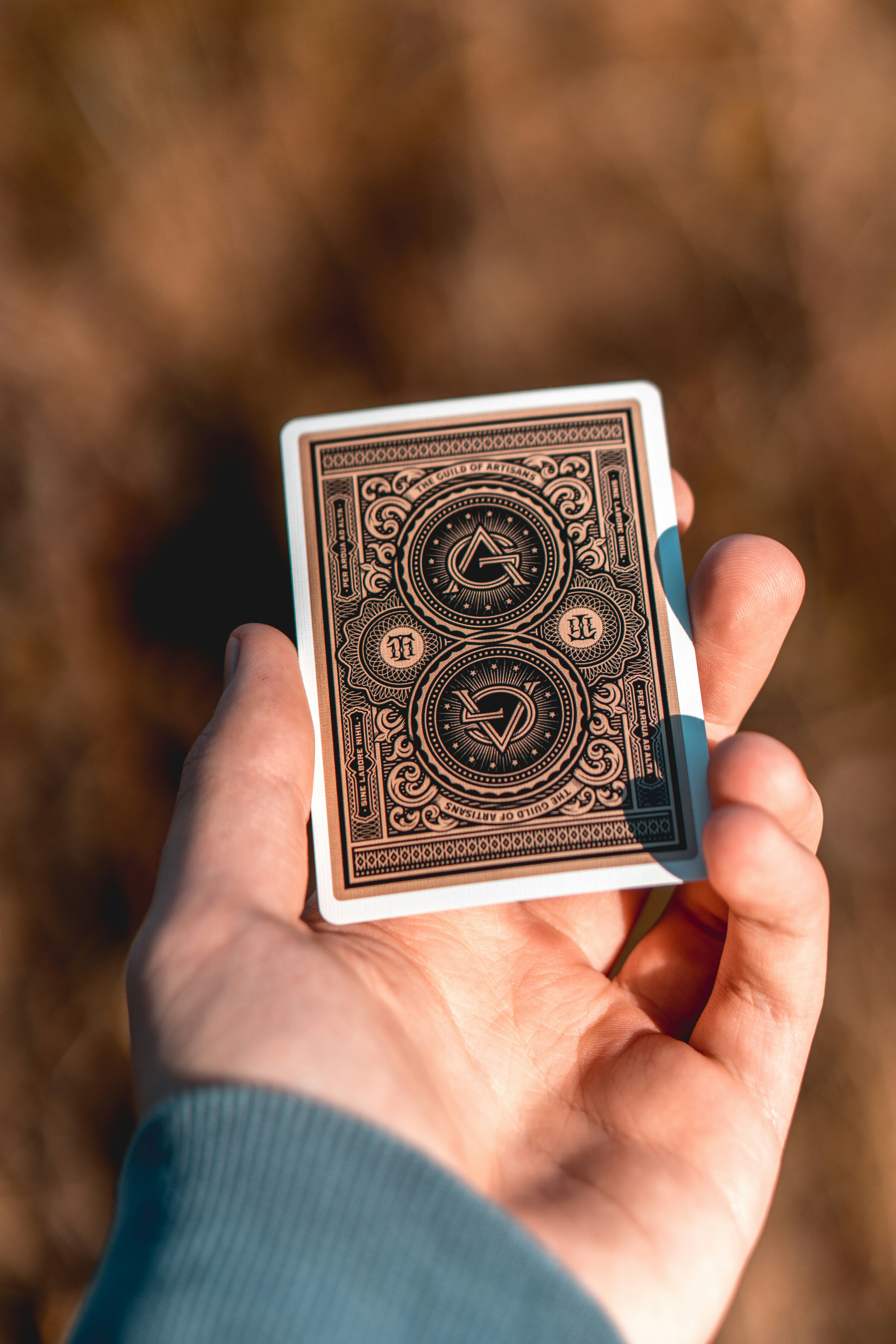Support our educational content for free when you purchase through links on our site. Learn more
🎩 6 Basic Principles Behind How Magic Tricks Work (2025)

Have you ever wondered how magicians make the impossible seem so effortless? Whether it’s a coin vanishing into thin air or a mind-reading act that leaves you speechless, the secret lies not in supernatural powers but in a fascinating blend of psychology, sleight of hand, and masterful showmanship. In this article, we’ll unravel the 6 fundamental principles that form the backbone of every magic trick, from the subtle art of misdirection to the clever use of secret devices.
Stick around, because later we’ll reveal how your own brain plays the ultimate role in these illusions—and why magicians can seemingly read your mind without any psychic powers. Plus, we’ll share insider tips on how you can start practicing these principles yourself and become the magician in your circle!
Key Takeaways
- Misdirection is the magician’s most powerful tool, guiding your attention away from secret moves.
- Sleight of hand requires precision and muscle memory, not just speed.
- Psychological manipulation exploits cognitive biases, making you believe in impossible outcomes.
- Secret devices and gimmicks enhance illusions but don’t replace skill.
- Optical illusions and perspective tricks fool your eyes, not reality.
- Timing and presentation turn a trick into a magical experience.
Ready to dive into the enchanting world of magic? Let’s pull back the curtain!
Table of Contents
- ⚡️ Quick Tips and Facts
- 🎩 The Ancient Art of Deception: A Brief History of Magic Principles
- 🧠 Unveiling the Illusion: The Core Principles Behind Magic Tricks
- 1. ✨ Misdirection: The Art of Guiding Attention
- 2. ✋ Sleight of Hand & Dexterity: The Invisible Touch
- 3. 💡 Psychological Manipulation & Cognitive Biases: Playing with Perception
- 4. 🛠️ Secret Devices & Gimmicks: The Hidden Helpers
- 5. 👁️ Optical Illusions & Perspective: What You See Isn’t Always What Is
- 6. 🎭 Timing & Presentation: The Rhythmic Dance of Deception
- 🧐 The Audience’s Role: Why We Want to Believe
- 📚 Learning the Craft: Applying the Principles of Magic
- ✅ Quick Tips for Aspiring Magicians
- 🔚 Conclusion: The Enduring Allure of Magic
- 🔗 Recommended Links for Further Exploration
- ❓ FAQ: Your Burning Questions Answered
- 📖 Reference Links
Here is the main body of the article, crafted with expertise from the team at Magic Trick™.
⚡️ Quick Tips and Facts
Welcome, future illusionist! Before we pull back the curtain on the deepest secrets of our craft, let’s start with a little appetizer of astonishing tidbits. Here at Magic Trick™, we believe that the best magic is built on a foundation of knowledge.
- Magic is Ancient: The earliest recorded magic trick dates back to ancient Egypt around 2000 B.C., described in the Westcar Papyrus. A magician named Dedi allegedly reattached the heads of decapitated birds. (Don’t worry, our methods are much more humane! 🕊️)
- Your Brain is the Real Magic Box: Magic doesn’t break the laws of physics; it cleverly exploits the natural glitches and shortcuts in your brain’s operating system, like inattentional blindness and other cognitive biases.
- It’s Not (Always) the Speed of the Hand: A common misconception is that sleight of hand must be lightning-fast. In reality, the most deceptive moves are often slow, deliberate, and perfectly timed to happen when you’re not paying attention.
- Misdirection is King: The legendary magician Tony Slydini was such a master of misdirection that he could fool other expert magicians, even without complex gimmicks. It’s the cornerstone of almost every trick.
- The “Magician’s Choice” Isn’t a Choice: Ever felt like you had a free choice in a trick? You probably didn’t. This psychological ploy, also known as “forcing,” makes you believe you’re in control when the outcome was decided long before you even participated.
🎩 The Ancient Art of Deception: A Brief History of Magic Principles

Magic is more than just pulling rabbits out of hats; it’s one of the oldest performance arts, deeply woven into human history. From the shamans of ancient tribes who used simple tricks to demonstrate their power, to the street performers of the Middle Ages, the core principles have remained surprisingly consistent.
The journey from mysterious rituals to theatrical entertainment was a long one. In the 18th and 19th centuries, magicians like Jean-Eugène Robert-Houdin (the “father of modern magic”) began performing in lavish theaters, elevating the art form. He understood that magic was not about supernatural powers but about science, psychology, and showmanship. This era laid the groundwork for the principles we master today. You can dive deeper into this fascinating evolution in our Magic History section. The secrets of the past are the tools of the present!
🧠 Unveiling the Illusion: The Core Principles Behind Magic Tricks
So, how do we really do it? How do we make a coin vanish, read your mind, or make a card appear from thin air? It’s not about “real” magic, but about the masterful application of a few powerful, interconnected principles. While some might list four key principles, we believe in giving you the full picture. Let’s break down the six pillars of our craft.
1. ✨ Misdirection: The Art of Guiding Attention
This is the big one, the absolute heart of almost every illusion. Misdirection isn’t just about making you look over there while we do something sneaky over here. It’s far more subtle. As one expert notes, “it is misleading you to look away in another direction from where the magician is doing his stuff.” The goal is to control what your brain focuses on.
Psychological Misdirection vs. Physical Misdirection
- Physical Misdirection: This is the classic version. A large, sudden gesture with the right hand draws your eyes, while the left hand quietly performs a secret move. We might drop a prop, ask a question that makes you look up, or use a glamorous assistant to draw your gaze.
- Psychological Misdirection: This is where the real artistry lies. We engage your mind on one task so that you fail to notice another. We might tell a captivating story, crack a joke, or ask you to remember your card. While your brain is busy with that, our hands are free to do their work. It’s a form of controlled distraction.
The Power of Patter and Storytelling
Our words are one of our most powerful tools. The “patter”—the script we follow—is designed to direct your thoughts. As the magician and author Ben Okri wisely said, “The magician and the politician have much in common: they both have to draw our attention away from what they’re really doing.” By weaving a compelling narrative, we give the trick meaning and, more importantly, we give your mind something to follow other than our hands.
2. ✋ Sleight of Hand & Dexterity: The Invisible Touch
Sleight of hand, or prestidigitation, is the technical skill behind many illusions, especially in Close-up Magic. It involves manipulating objects like cards, coins, and balls with such precision and grace that the action goes unnoticed.
Mastering the Mechanics: Practice Makes Perfect
There are no shortcuts here. Achieving flawless sleight of hand requires countless hours of dedicated practice. It’s about building muscle memory until the moves become second nature. As one performer aptly put it, “Just as a skilled musician practices scales and chords to perfect their performance, a magician spends hours honing their technique to execute flawless coin tricks.”
| Common Sleight of Hand Techniques | Description | Often Used In |
|---|---|---|
| Palming | Secretly holding an object (like a coin or card) in the palm of the hand. | Vanishing tricks, productions. |
| False Shuffle | A shuffling technique that looks real but leaves the deck (or part of it) in its original order. | Card tricks, especially prediction effects. |
| The Pass | A secret method to move a card or group of cards from the middle of the deck to the top or bottom. | Ambitious Card routines. |
| Lapping | Dropping an object into your lap while seated at a table, making it seem to have vanished. | Close-up and table magic. |
The Role of Muscle Memory and Precision
The goal is for the hands to perform the secret move so naturally that it doesn’t attract any suspicion. The great Dai Vernon, known as “The Professor,” was a master who championed a natural, relaxed approach to sleight of hand. He proved that smooth, practiced movements are far more deceptive than frantic, fast ones. This is a core concept we explore in our Magic Theory discussions.
3. 💡 Psychological Manipulation & Cognitive Biases: Playing with Perception
This is where magic gets really fascinating. We are, in essence, practical psychologists. We exploit the predictable ways your brain works to create impossible moments. The legendary David Copperfield said it best: “Magic’s about understanding how other people think, what makes ’em tick, and how to amaze ’em.”
The Magician’s Choice: An Illusion of Free Will
This is a powerful form of the “Principle of Force.” We present you with what appears to be a fair choice, but every option leads to the outcome we’ve already determined.
- Example: “Pick a card, any card… from these two.” We hold out two cards. If you pick the one we want, great. If you pick the other one, we’ll say, “Okay, we’ll discard that one, and you keep the remaining card.” Either way, you end up with the card we intended. ✅
Suggestion and Framing: Shaping Reality
Our words can plant ideas in your head. If we repeatedly refer to a regular deck of cards as “thoroughly shuffled and completely normal,” you’re more likely to accept it as fact, even if we’ve secretly controlled the order. This is a form of verbal manipulation, which can be so subtle it “seems like having said everything at the same time.”
Memory Gaps and Confirmation Bias
Your memory is not a perfect recording. After a trick is over, your brain will try to reconstruct what happened. We rely on this! We create moments of “magical amnesia” where you can’t quite recall the exact sequence of events, allowing you to fill in the blanks with the “magic” explanation. You’ll remember the impossible outcome but forget the small, insignificant details where the secret move was hidden.
4. 🛠️ Secret Devices & Gimmicks: The Hidden Helpers
Sometimes, a little help from a clever prop is in order. A “gimmick” is any secret device or alteration to a prop that makes the magic happen. This doesn’t mean the trick is “easy”—it still requires skill to use a gimmick without revealing it.
Everyday Objects Transformed: Ingenious Props
Many of the most powerful gimmicks are hidden in plain sight.
- Stripper Deck: A deck of cards where one end is trimmed slightly narrower than the other, allowing the magician to control a selected card by feel alone.
- Thumb Tip: A hollow plastic thumb that fits over your real thumb, perfect for vanishing small items like silks or salt.
- Invisible Thread: Used for levitation effects, this ultra-fine thread is invisible to the audience under the right lighting conditions.
You can find many of these tools in magic kits for aspiring illusionists. 👉 Shop for beginner magic kits on: Amazon | Walmart
The Evolution of Magic Apparatus
From the complex mechanical automata of Robert-Houdin to the high-tech illusions you see on stage today, the technology of magic is always advancing. Stage illusions like sawing a person in half rely on cleverly constructed props with hidden compartments, mirrors, and mechanics to create the effect.
5. 👁️ Optical Illusions & Perspective: What You See Isn’t Always What Is
Our eyes can be easily fooled. Magicians are masters of manipulating perspective, angles, and lighting to create visual falsehoods. This is especially true for large-scale stage illusions.
Angles, Lighting, and Visual Deception
The angle from which you view a trick is critical. A trick that is baffling from the front might be painfully obvious from the side or above. We carefully control the “sight lines” of the audience. Lighting is also key; a well-aimed spotlight can illuminate what we want you to see while casting deep shadows on our secret actions.
Forced Perspective and Vanishing Acts
Forced perspective, a technique often used in filmmaking, can make objects appear larger, smaller, closer, or farther away than they really are. This can be used to create stunning illusions. The famous “Vanishing the Statue of Liberty” illusion by David Copperfield was a masterpiece of perspective and stagecraft, not a feat of actual teleportation.
6. 🎭 Timing & Presentation: The Rhythmic Dance of Deception
A trick is nothing without a performance. The final, and arguably most important, principle is the presentation. This is what turns a mere puzzle into a moment of wonder.
The Importance of Pace and Rhythm
The timing, or “tempo,” of a routine is crucial. We build suspense with pauses, create surprise with sudden reveals, and use a steady rhythm to lull your critical mind into a state of acceptance. A rushed performance feels clumsy, while a performance that is too slow can bore the audience and give them too much time to think.
Building Suspense and Delivering the Punchline
Every magic trick is a short story with a beginning, a middle, and a surprising end. Our job as performers is to guide you on that journey. As one article on the psychology of magic notes, “Magic tricks are often designed to build suspense and create a sense of anticipation in the audience, leading up to a surprising and unexpected reveal at the end.” This emotional arc is what makes the final moment of impossibility so impactful.
🧐 The Audience’s Role: Why We Want to Believe
Have you ever wondered why you enjoy being fooled? It’s a strange and wonderful part of the human experience. The truth is, the audience is the final, secret ingredient in any magic trick.
The Willing Suspension of Disbelief
When you sit down to watch a magic show, you enter into an unspoken agreement with us. You agree to temporarily set aside your skepticism and allow yourself to be amazed. This “willing suspension of disbelief” is the same mental state you enter when watching a movie or reading a fantasy novel. You know it’s not real, but you allow yourself to believe it is for the sake of entertainment.
The Thrill of the Unknown and the Desire for Wonder
In a world that is increasingly explained and understood, magic provides a rare and precious glimpse into the impossible. It reminds us of the childlike wonder we all once had. The gasp of astonishment, the feeling of seeing something that simply can’t be, is a powerful and joyful experience. You don’t just watch the magic; you help create it by bringing your sense of wonder to the show.
📚 Learning the Craft: Applying the Principles of Magic
Feeling inspired? The good news is that anyone can learn magic. It’s a hobby that offers incredible benefits, from improving hand-eye coordination and confidence to boosting creativity.
Where to Start Your Magical Journey
- Start Simple: Don’t try to tackle complex sleight of hand on day one. Begin with self-working tricks that rely on clever principles rather than difficult moves. Our guides on Coin Tricks are a great place to start.
- Focus on Presentation: Remember, it’s not just what you do, but how you do it. Practice your patter. Think about your character. As one guide for beginners advises, “Make eye contact, speak confidently, and engage your audience.”
- Study the Masters: Watch performances by great magicians. Pay attention to their timing, their misdirection, and how they interact with the audience.
- Practice, Practice, Practice: There is no substitute for rehearsal. Practice in front of a mirror until the moves are smooth and automatic.
The Ethics of Illusion: Responsibility and Secrecy
With great power comes great responsibility. The number one rule of our craft is to never reveal the secret to a trick. Exposing the method ruins the sense of wonder not just for your audience, but for anyone they might tell. It’s a tradition of respect for the art and for the audience’s experience. Delving into our articles on Magic Secrets will give you a deeper appreciation for this core tenet.
✅ Quick Tips for Aspiring Magicians
- ✅ Practice in front of a mirror. It’s your most honest audience.
- ❌ Don’t perform a trick until you’ve mastered it. A fumbled trick is worse than no trick at all.
- ✅ Develop your own style. Don’t just copy another magician; let your personality shine through.
- ❌ Never repeat a trick for the same audience. They’ll be watching more closely the second time!
- ✅ Focus on the effect, not the method. The audience cares about the magic they see, not the clever move they don’t.
- ❌ Don’t claim to have supernatural powers. You’re an entertainer, not a psychic. Keep it fun
🔚 Conclusion: The Enduring Allure of Magic

And there you have it — the curtain lifted on the basic principles behind how magic tricks work! From the subtle art of misdirection to the deft mastery of sleight of hand, from psychological wizardry to clever gadgets and perfectly timed presentation, magic is a symphony of skills and secrets designed to delight and astonish.
Remember, magic isn’t about supernatural powers; it’s about understanding human perception, exploiting cognitive quirks, and delivering a story that captivates. The audience’s willingness to believe and suspend disbelief is the final ingredient that transforms a simple trick into a moment of wonder.
If you’ve ever wondered how magicians seem to read your mind or make objects vanish before your eyes, now you know it’s a blend of science, psychology, and art—all choreographed to perfection. The next time you watch a magic show, you’ll appreciate the layers of craft behind every illusion.
For those inspired to try their hand at magic, start small, practice diligently, and always respect the sacred code of secrecy. Magic is a journey of patience and creativity, but the rewards—joy, amazement, and the smiles you create—are truly magical.
Ready to dive deeper? Check out our recommended resources below to sharpen your skills and expand your magical horizons!
🔗 Recommended Links for Further Exploration
Looking to get your hands on some of the essential magic tools or dive into the wisdom of the masters? Here are some top picks:
-
Beginner Magic Kits:
Amazon Beginner Magic Kits | Walmart Beginner Magic Kits -
Classic Magic Books:
-
Magic Props and Gimmicks:
- Stripper Decks: Amazon Search
- Thumb Tips: Amazon Search
- Invisible Thread: Amazon Search
-
Learn More About Magic Theory and Secrets:
Visit our Magic Theory and Magic Secrets categories.
❓ FAQ: Your Burning Questions Answered

How do magicians use misdirection to enhance their tricks?
Misdirection is the deliberate act of diverting the audience’s attention away from the secret moves or mechanisms of a trick. Magicians use physical cues (like exaggerated hand gestures), psychological cues (engaging stories or questions), and props to control where and when the audience looks. This manipulation of focus exploits the brain’s limited attentional capacity, allowing secret actions to go unnoticed. For example, while your eyes follow a flashy movement, the magician’s other hand performs the hidden sleight of hand. Misdirection is the backbone of almost every magic effect.
Read more about “15 Easy Magic Tricks That Impress Everyone in 2025 ✨”
What role does psychology play in performing magic tricks?
Psychology is the magician’s secret weapon. Understanding how people perceive, remember, and make decisions allows magicians to exploit cognitive biases such as confirmation bias, inattentional blindness, and memory gaps. Techniques like the Magician’s Choice create an illusion of free will, while verbal suggestion shapes audience expectations. By manipulating perception and thought processes, magicians craft illusions that feel impossible but are rooted in predictable mental patterns.
Read more about “15 Mind-Blowing Hand Tricks to Do on Your Friends (2025) ✋✨”
What are the common techniques used in sleight of hand magic?
Sleight of hand involves skillful, often subtle, manipulations of objects. Common techniques include:
- Palming: Concealing an object in the palm.
- False Shuffles and Cuts: Making it appear the deck is mixed while maintaining order.
- The Pass: Secretly repositioning cards.
- Lapping: Dropping objects into the lap unnoticed.
Mastering these requires hours of practice to build muscle memory and natural movements that avoid suspicion.
Read more about “28 Mind-Blowing Magic Tricks You Can Master in 2025 🪄”
How important is audience interaction in successful magic performances?
Audience interaction is crucial. Engaging spectators creates a personal connection, making the effect more memorable and impactful. Participation also provides natural cover for secret moves and misdirection. When the audience feels involved, they are more likely to suspend disbelief and enjoy the experience. Skilled magicians tailor their patter and timing to the audience’s reactions, enhancing the overall performance.
Read more about “How to Do Real Magic with Hands: 15 Mind-Blowing Tricks (2025) ✋✨”
What materials and props are typically used in basic magic tricks?
Basic magic often uses everyday objects such as:
- Playing cards (standard or gimmicked decks like stripper decks)
- Coins (for vanish and production effects)
- Silks and ropes
- Thumb tips (for vanishing small items)
- Invisible thread (for levitation illusions)
Props can be ordinary or specially designed with secret compartments or mechanisms to aid the illusion.
Read more about “What Is the Oldest Magic Trick? 🪄 Discover 5 Ancient Illusions (2025)”
How can beginners learn and practice magic tricks effectively?
Beginners should:
- Start with self-working tricks that rely on principles rather than complex sleights.
- Practice in front of a mirror to observe and refine movements.
- Focus on presentation and storytelling as much as technique.
- Study performances by master magicians for inspiration.
- Join magic communities or take online courses for feedback and support.
Consistent practice and patience are key to progressing.
Read more about “How to Do 7 Simple Magic Tricks with Your Hands in 2025 ✋✨”
What are the ethical considerations when performing magic tricks?
Ethics in magic revolve around respecting the art and the audience. Key points include:
- Never revealing secrets that spoil the wonder for others.
- Avoiding claims of supernatural powers; magic is entertainment, not psychic phenomena.
- Being honest about the nature of the performance.
- Respecting audience boundaries and avoiding tricks that could embarrass or harm spectators.
Maintaining these ethics preserves the magic’s mystery and integrity.
Read more about “102 Classic Magic Tricks That Still Amaze in 2025 🎩”
📖 Reference Links
- Westcar Papyrus – Ancient Egyptian Magic
- Tony Slydini Biography – Genii Magazine
- Dai Vernon – Britannica
- Inattentional Blindness – Britannica
- David Copperfield Official Site
- The Psychology behind Magic Tricks — Wizard of Sorts
- Magic Trick™ Categories: Coin Tricks | Magic History | Close-up Magic | Magic Theory | Magic Secrets
We hope this guide has sparked your curiosity and empowered you to explore the enchanting world of magic. Remember, the greatest magic is the joy you create for others—and that, dear reader, is truly priceless! 🎩✨
